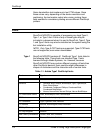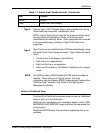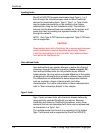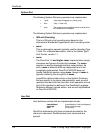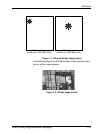
PostScript
1-6 Guide to Using Page Description Languages
• Including graphic images is easier when creating the
document.
Producing Type 1 fonts for use with DocuPrint
Third-party software for font editing and creation is available for
most popular personal computing systems. With these
programs, you can edit or produce outlines from a bitmap
obtained by scanning existing line art.
Each graphical item that is referenced must be assigned to a
character code in a font. You can incorporate many graphic
elements in a single font by assigning each element to a different
character code, or you can place each item in its own font.
Once created, you must save Type 1 fonts on an MS-DOS
diskette as files with the .pfb extension. You can then load the
fonts from diskette onto a DocuPrint system using the
administrator
Install Fonts From Floppy
command.
Using a Type 1 font in a document
When you create a document using a standard document editor,
you enter the character that refers to the graphic image you
want, assign the appropriate font to it, and size and place it to fit
the document. If you are using Adobe Type Manager, the image
is scaled and displayed.
The PostScript driver of the document editor selects the font
using the PostScript operator
findfont
and scales the font using
scalefont
. Once the font is installed as current by the setfont
operator, any
show
of a character images the figure associated
with that character code.
For example, you can create a font containing a corporate logo,
assigned to the character
a.
The following PostScript example
shows how the specific size of the logo font is assigned a name
within a master, and how the logo is placed on a page.
/Logo /XYZCorpLogos findfont 20 scalefont def
Logo setfont
50 50 moveto (a) show







